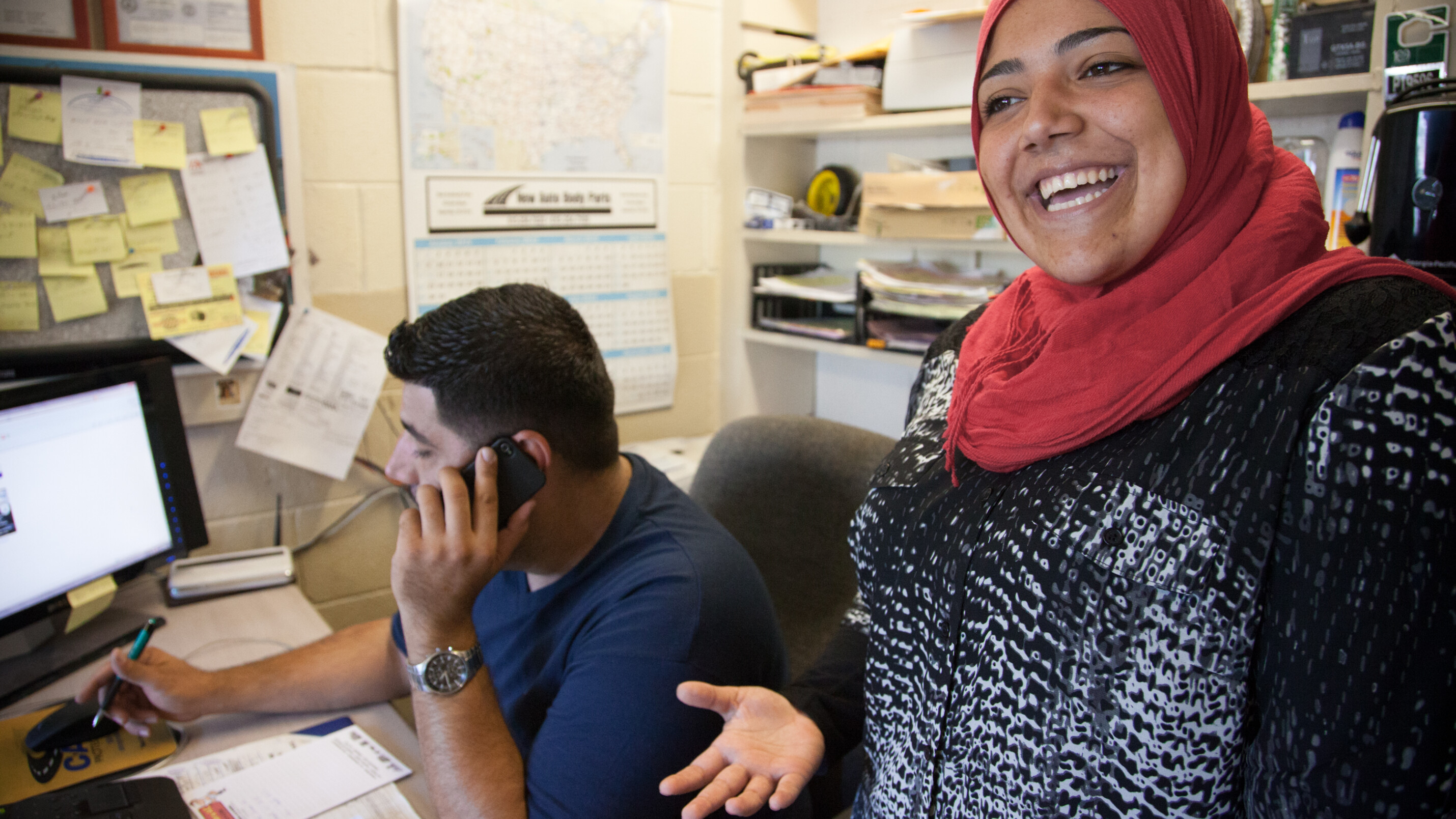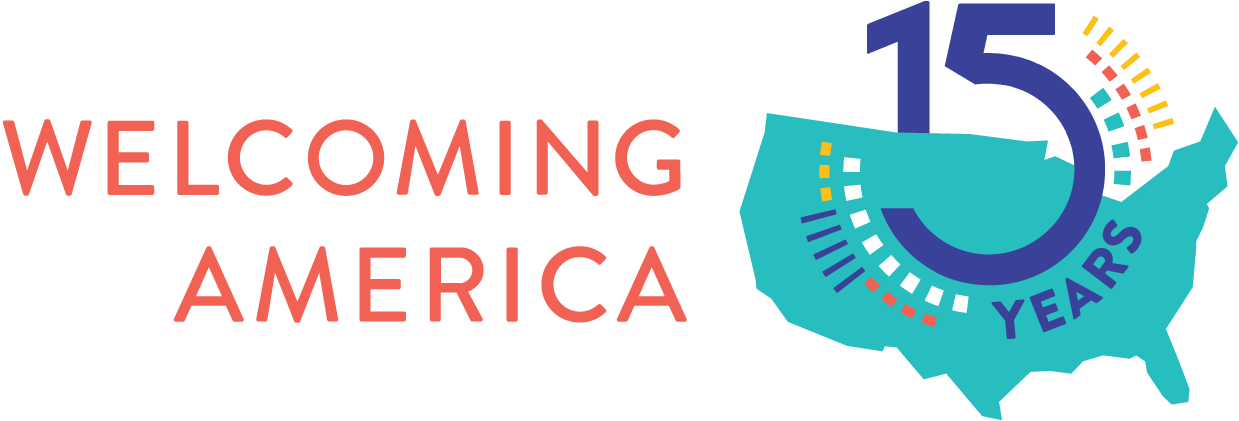
Adaptive, resilient, and innovative: How the Welcoming Network is responding to COVID-19
The Welcoming Network is composed of more than 200 local governments and local nonprofit organizations working to make their communities welcoming and inclusive places for all. In this Q&A, Christina Pope, Senior Network Director at Welcoming America, shares her observations on how the network is responding to the COVID-19 pandemic in their communities.
What are a few strategies for organizations to consider as they adapt in this moment? What are we seeing from our network that informs this?
Ask funders for what you need. Are you suddenly being called upon to translate documents when you didn’t do that before? Are you talking with immigrant-owned businesses about how to develop an online ordering system? Communicate what you are doing and ask philanthropic institutions and individuals for support.
Members have seen early wins in this area. A helpful resource on this topic is the COVID-19 guidance for funders from Grantmakers Concerned with Immigrants and Refugees.
In a crisis, new leaders emerge, and seasoned leaders search for ways to jump into action. Look to your volunteers, clients, and other community members to identify “natural helpers” or community organizers. Create a regular communication channel (conference call, messaging app, etc.) and relay updates from your trusted, centralized COVID-19 source as they’re available so helpers can amplify the reach within their networks. Check out the Natural Helpers model now active in eight U.S. cities from Portland, ME to Indianapolis, IN to Aurora, CO. These helpers, along with multilingual media outlets and community-based organizations, are on the front lines of COVID-19 communication.
Expand your “table” or ask to be at the table. Who is representing immigrant inclusion on your regional COVID-19 response task force? See insights on this topic from Zee Xiao, Director of the Mayor’s Office for New Americans in Salt Lake County, UT.
Recognize that newcomers are critical to the response effort, and lift up newcomer contributions alongside those of other residents. The Wayne YMCA in Wayne, NJ is coalescing around community action, mobilizing diverse volunteers to work together to meet COVID-19 community needs. The Y is partnering with a range of local organizations to tap community leaders — newcomers and longtime residents alike — who will work together on solutions. While many immigrants are hurting right now and are disproportionately impacted by the virus, many are also looking to be part of the response effort and are on the frontlines in critical professions, as documented by New American Economy. Fully tapping and celebrating everyone’s contributions is crucial for our long-term success in overcoming and recovering from the pandemic.
What are a few strategies Welcoming Network members are taking on to be more resilient?
One is looking for new ways to partner and use a multi-sector approach. The New England Arab American Organization is working with local groups like United Way, Maine Health Access Foundation, Maine Community Foundation, and others to make sure New Mainers have food, medical services such as Telehealth, and communications tools like cell phones and internet. How can you be of help to other organizations? How can they be of help to you?
Another strategy is to look for opportunities to foster social cohesion and community engagement. As you adapt programs and build out virtual components, how can your efforts bring people together who are not always invited/given access to be “on the same team”? The Emerson YMCA in Ferguson, MO is planning a volunteer work day to build a playground at Our Lady of Guadalupe Parish & School to be held after social distancing is over. The volunteers will be newcomers and longtime residents alike, including YMCA members, Our Lady of Guadalupe parishioners and school families, and small businesses from the area. Their adaptation for social distancing is to use this unexpected time at home to convene a virtual planning committee of individuals from these diverse constituencies, who will work together to plan the event. The addition of the planning committee creates a new opportunity to build relationships while working together on a common goal. When it is safe to build the playground, volunteers who got to know one another online will have the chance to meet in person, work together, and celebrate. Check out our “contact-building (PDF)” guide for background on why it’s important to build community across difference in the short- and long-term, and tips for success.
Also, communities are investing in local businesses. Members are stepping in to ensure immigrant-owned businesses receive guidance on how to access federal and local stimulus supports. Multilingual staff from the University YMCA at the University of Illinois Urbana-Champaign are calling immigrant-owned businesses to make sure they’re in the know about stimulus supports. Global Detroit is distributing an informational Paycheck Protection Program one-pager with plain language that will soon be available in other languages. Plus, we’re seeing members take a second look at their programs to see where they can contract with local businesses and help these institutions survive the economic disruption.
What are other innovative best practices from the network at this moment?
Engage multilingual media and social media influencers to amplify the reach of vetted information from trusted sources in the most widely spoken languages. The City of Baltimore Mayor’s Office of Immigrant Affairs provides video updates in Spanish every Friday. They are also partnering with social media influencer Pedro Palomino and the Johns Hopkins Centro Sol to share weekly updates in Spanish aired via the Facebook page for Somos Baltimore Latino every Friday.
Don’t forget about non-digital strategies. The City of Portland, ME translated a one-pager with COVID-19 prevention and resource info that’s gone out in food distribution deliveries.
What is one way to support the Welcoming Network at this time?
If you are a local nonprofit organization or local government, consider joining as a member. This gives you access to webinars on timely topics, opportunities from rapid response efforts, and other resources from a network of organizations doing similar work, which can help you borrow smart ideas and save time and resources.

